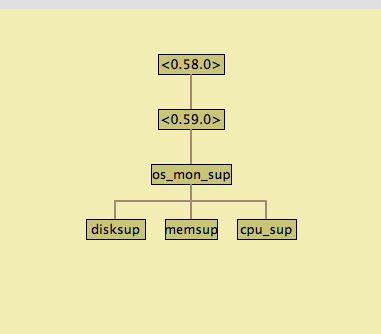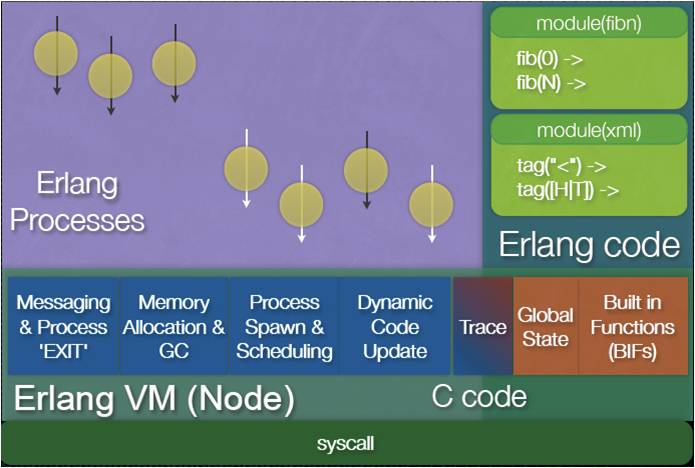erlang和其他语言读文件性能大比拼
原创文章,转载请注明: 转载自系统技术非业余研究
本文链接地址: erlang和其他语言读文件性能大比拼
百岁同学说:
今天公司技术比武,比赛题目是给一个1.1g的大文本,统计文本中词频最高的前十个词。花了两天用erlang写完了代码,但是放到公司16核的机器上这么一跑,结果不比不知道,一比吓一条。erlang写的代码执行时间花了55秒左右,同事们有的用java,有的用C,还有的用C++,用C最快一个老兄只花了2.6秒,用java的也只用了3.2秒。相比之下erlang的代码,真是一头大蜗牛,太慢了。
详细参见这篇文章:http://www.iteye.com/topic/1131748
读取文件并且分析这是很多脚本语言如perl, python,ruby经常会干的事情.这个同学的问题是很普遍的问题,不只一个人反映过慢的问题。
今天我们来重新来修正下这个看法, 我们用数据说话。
首先我们来准备下文件, 这个文件是完全的随机数,有1G大小:
$ dd if=/dev/urandom of=test.dat count=1024 bs=1024K 1024+0 records in 1024+0 records out 1073741824 bytes (1.1 GB) copied, 188.474 s, 5.7 MB/s $ time dd if=test.dat of=/dev/null 2097152+0 records in 2097152+0 records out 1073741824 bytes (1.1 GB) copied, 1.16021 s, 925 MB/s real 0m1.162s user 0m0.219s sys 0m0.941s $ time dd if=test.dat of=/dev/null bs=1024k 1024+0 records in 1024+0 records out 1073741824 bytes (1.1 GB) copied, 0.264298 s, 4.1 GB/s real 0m0.266s user 0m0.000s sys 0m0.267s
我们准备了1G大小左右的文件,由于用的是buffered io, 数据在准备好了后,全部缓存在pagecache里面,只要内存足够,这个测试的性能和IO设备无关。 我们试着用dd读取这个文件,如果块大小是4K的话,读取这个文件花了1.16秒,而如果块大小是1M的话,0.26秒,带宽达到4.1GB每秒,远超过真实设备的速度。
那么我们用erlang来读取下这个文件来比较下,我们有三种读法:
1. 一下子读取整个1G文件。
2. 一个线程一次读取1块,比如1M大小,直到读完。
3. 多个线程读取,每个读取一大段,每次读取1M块大小。
然后比较下性能。
首先普及下背景:
1. erlang的文件IO操作由efile driver来提高,这个driver内部有个线程池,大小由+A 参数控制,所以IO是多线程完成的。
2. erlang的文件分二种模式: 1. raw模式 2. io模式 在raw模式下,数据直接由driver提供给调用进程, io模式下数据先经过file_server做格式化,然后再给调用进程。
3. 数据可以以binary和list方式返回,list方式下文件内容的byte就是一个整数,在64位机器上占用8个字节内存。
Read more…
Post Footer automatically generated by wp-posturl plugin for wordpress.




Recent Comments